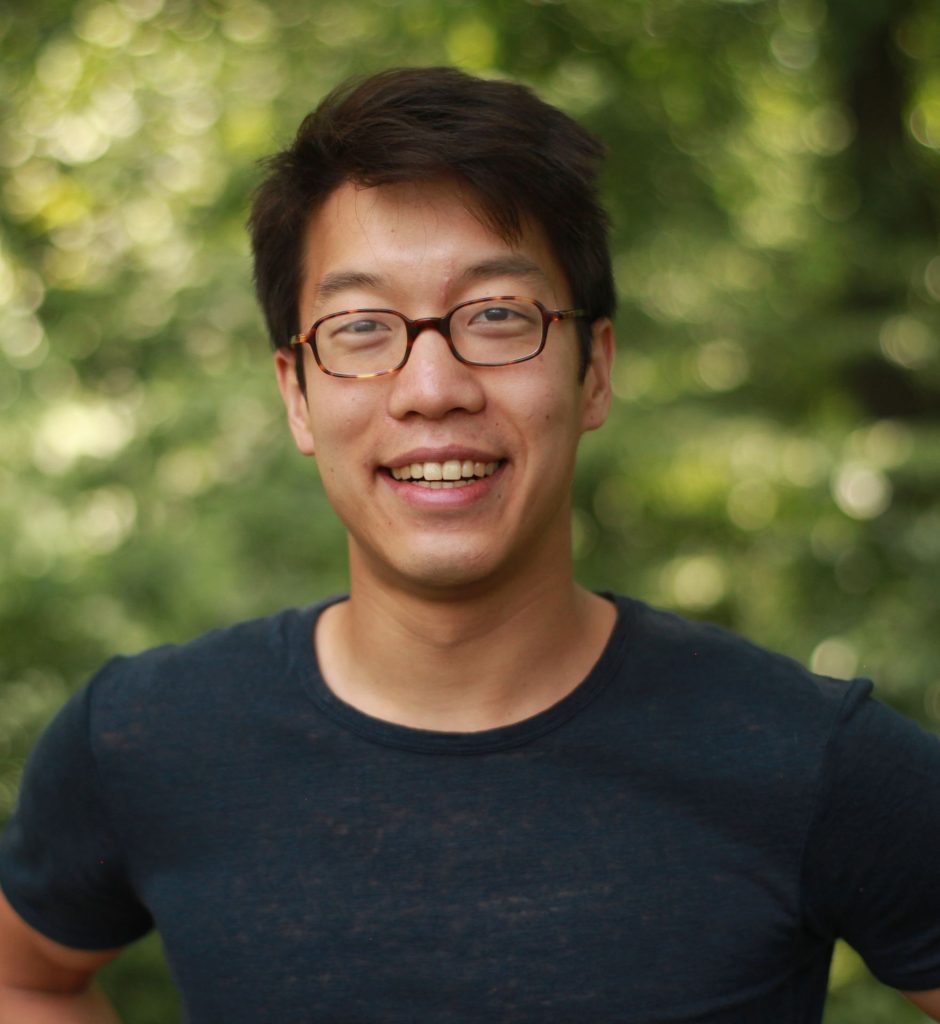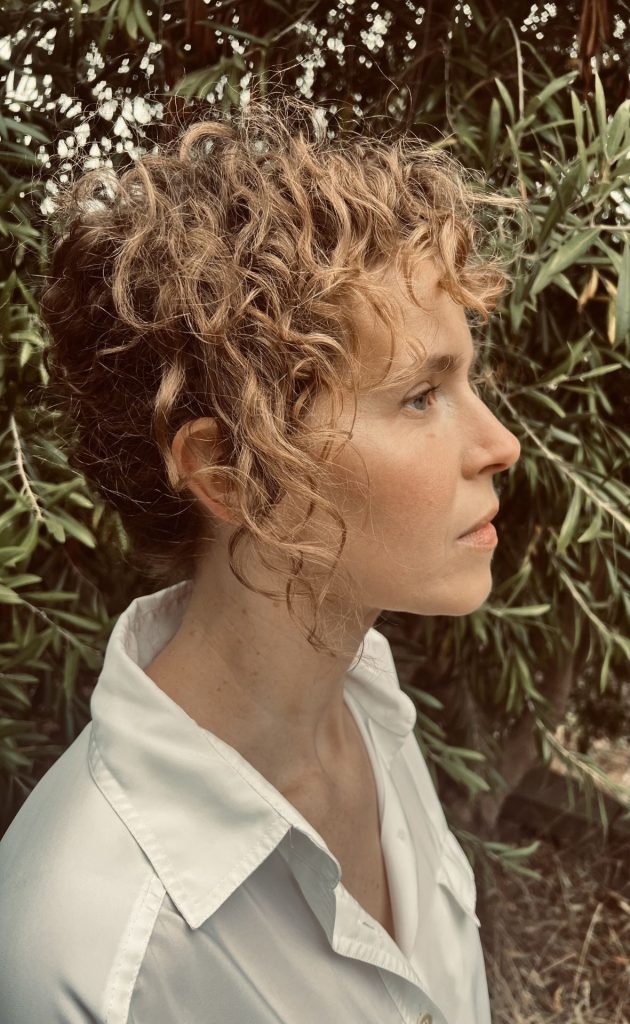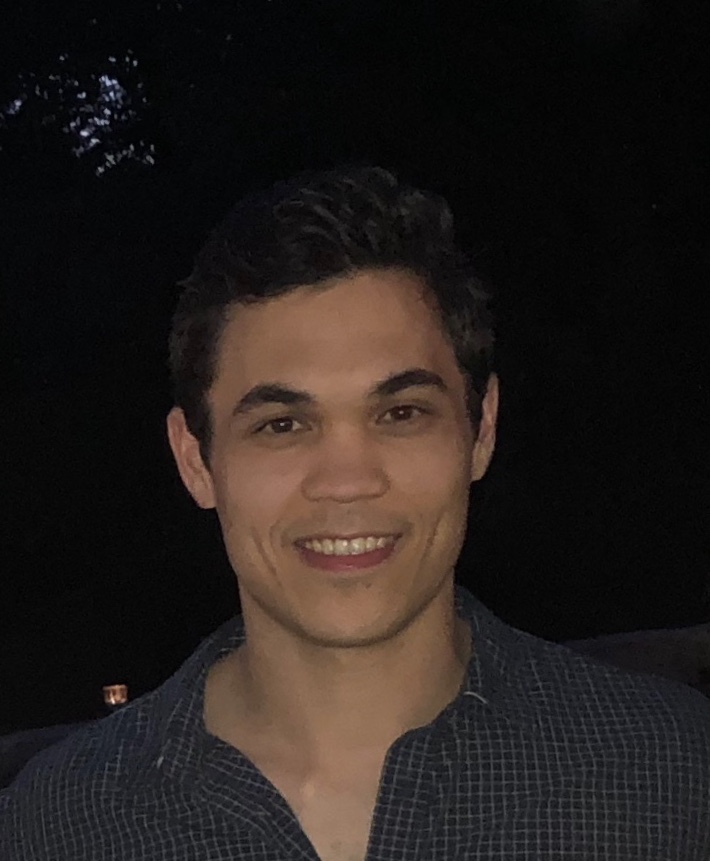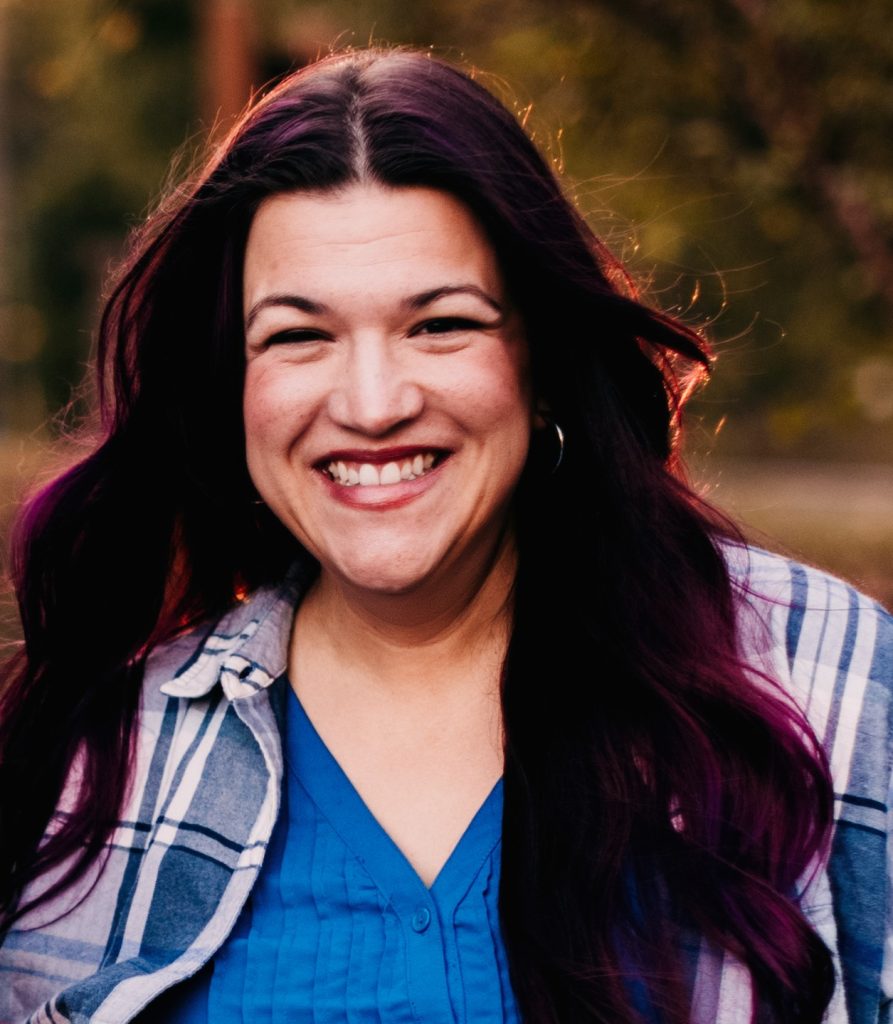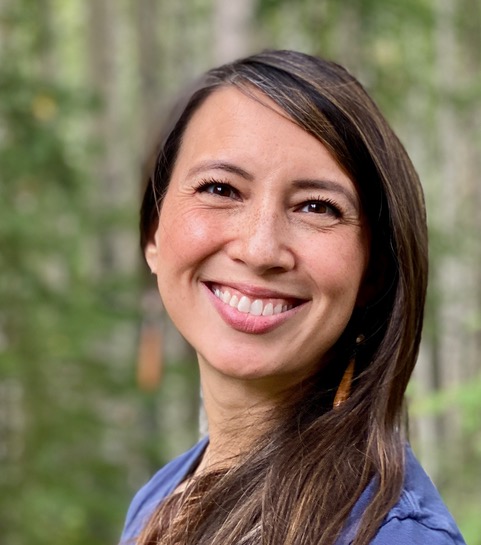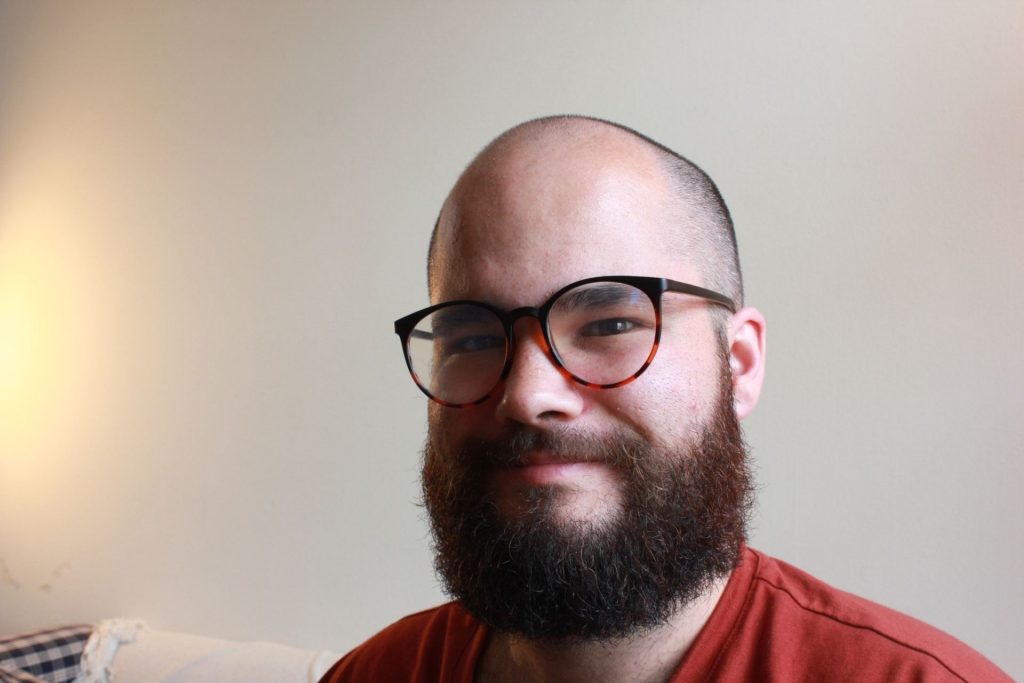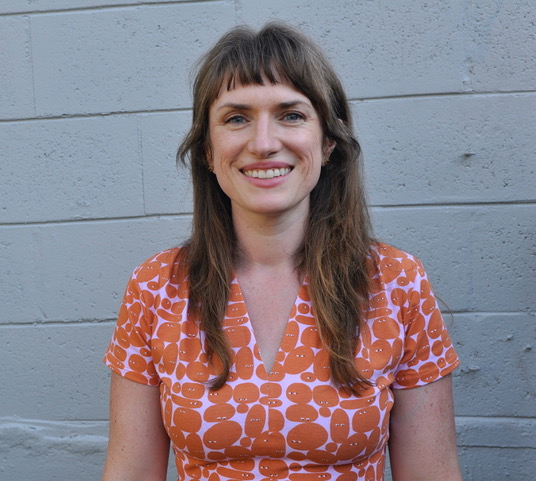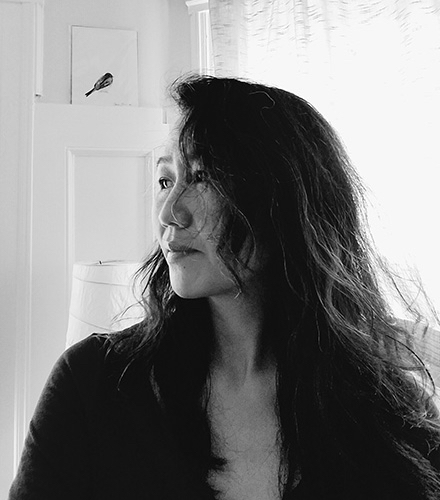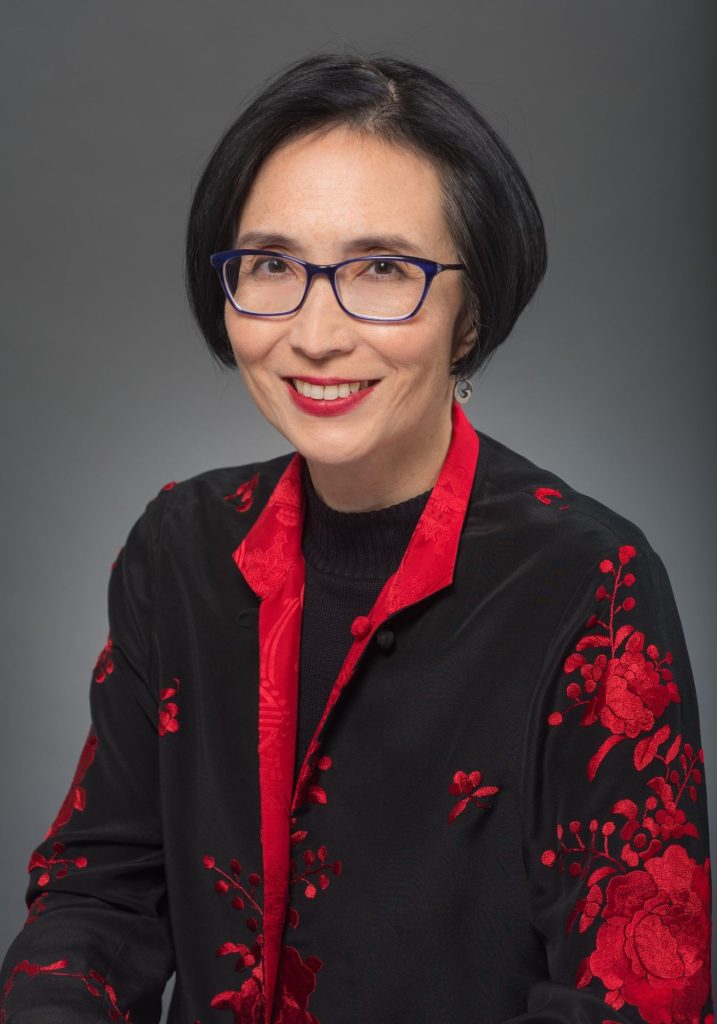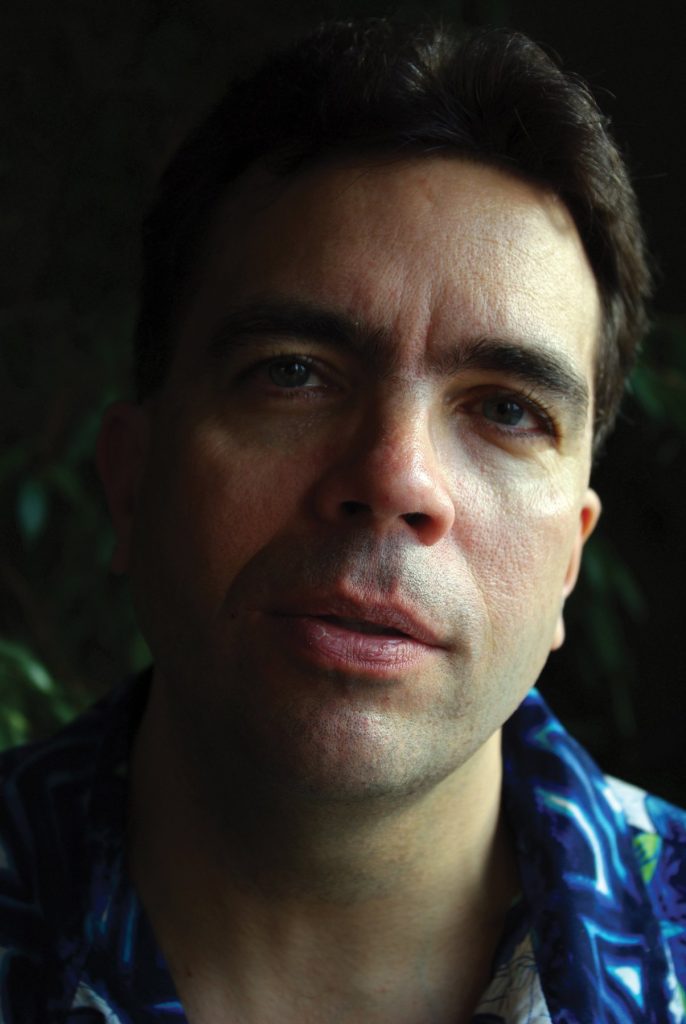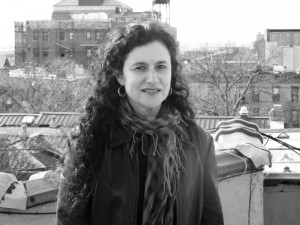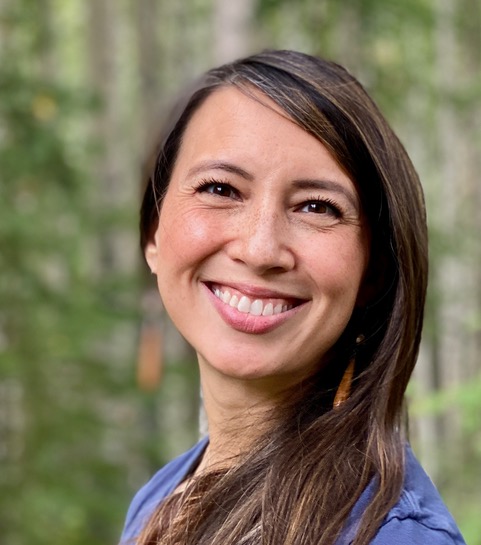
Photo courtesy of Annie Wenstrup
Staff reader Nico Amador talks with NER poet Annie Wenstrup about the certainty of writing in form, the difference between refusal and redress, hyperobjects, and her two poems in our new emerging writers’ issue (44.4).
Nico Amador: Your poems “Exhibit D: Unsent Memo” and “Ghost Pixels” appear in NER’s most recent emerging writer’s issue. The only guideline we have for that is that a writer hasn’t yet published a book or full-length collection, otherwise that categorization isn’t very precise. How would you describe where you are in your development as a writer? Where do you expect your focus to be in the coming year?
Annie Wenstrup: I feel like I’m still a student writer despite no longer being in school. Whenever I sit down to work I feel like there’s a chance to learn something new or to practice a new skill. I’m also lucky to have several friends who continue to workshop poems with me and recommend what to read next.
I recently finished my first manuscript, “The Museum of Unnatural Histories,” and I’m looking forward to discovering what my next project is. I’m more comfortable revising work than I am generating poems. With revision I have a sense (however wrong it may be) that I am moving towards a shape that already exists within the poem. Generating new work feels more daunting but I’m trying to embrace the inherent uncertainty in drafting.
NA: These poems deal directly with death, genocide, and extinction. Those are heavy themes to approach in the space of a single poem, but I sense that you’re attuned to finding conceits that allow you an economy of language. What considerations or aesthetic sensibilities guided your construction of these two pieces? What does your editing process look like?
AW: The form for “Ghost Pixels” emerged in the final rounds of editing. In 2021, I’d drafted a lot of poems that considered how traumatizing TV news is. The process of drafting those poems felt compulsory; no matter what I wrote, I kept returning to the news stories I saw as a child: Princess Diana’s death and the murder of JonBenét Ramsey. At the same time, I was reading and writing about the Missing and Murdered Indigenous Peoples Crisis and the Red Dress Movement. No matter my intention when beginning a draft, my simultaneous dismay over how the news objectifies white women and how white culture erases Indigenous women crept into the drafts.
When I felt stuck with my work—the drafts felt didactic—I turned to form. Form’s constraints offer a different path through thinking and writing. In this case, the sestina’s stanzas allowed me to embrace compulsion and rumination while the envoi encouraged me to be direct about what was at the heart of my preoccupation. Form took me to a poetic turn and intimacy that I’d been unable to reach in the previous drafts. Form granted me permission to write what I needed to write. If I work with form, I surrender a little bit of my agency as a writer. In exchange I receive the certainty of an assignment—I have requirements to fulfill, and that pressure pushes me to write things I’d otherwise censor. In this case, the form compelled me to acknowledge my fear that in the face of violence marked by gender and cultural hierarchy, I find myself displaced and silent.
Writing and editing “Exhibit D: Unsent Memo” was a similar experience. In 2023, I was writing drafts that responded to conversations about salmon. The conversations were things I’d overheard, or responses to news articles and policy proposals. It was and is frustrating to witness these conversations and how they’re framed. In Alaska, salmon are spoken about as though they’re a resource, something inert, a potential commodity. Or, salmon become a metonym for Alaska Native cultures. Or salmon are wielded as an emblem for a pan-Alaskan identity. I was accumulating all of these drafts that were one-sided conversations with people who wouldn’t want to discuss salmon with me in real life. In revision, I re-read them and tried to identify areas where the language had more play and duality within it. When I couldn’t find the transgressiveness within what I’d written, I looked for a form that might create tension with the language already on the page. Moving the language into a memo’s structure reframed how the poem engaged with those larger themes of extinction and death.
NA: I’m very interested in the progression that takes place in “Exhibit D: Unsent Memo.” It begins, “We both agree the problem is death,” but as the poem unfolds, we come to understand that this piece is taking shape around an argument, though it’s never named explicitly. The agreement between the speaker and the “you” being addressed is only superficial and facetious. I wondered if that understated quality was meant to reveal something about where power sits in this interaction, and what constraints the speaker is navigating.
AW: The poem’s form mimics a document’s mono-directional flow of information while inverting whose voice is prioritized. That sounds optimistic, as though the poem’s choice will correct a power imbalance. I don’t think it does. Even as the speaker vocalizes, they withhold contextual information from the poem’s “you.” They’ve seemingly moved from being unable to speak into actively withholding their language. One way of thinking about their decision to withhold is a limited declaration of power and agency. It’s a protest, a refusal to fully engage in bad faith interactions. The problem with refusal is it isn’t the same as redress. The refusal is an acknowledgement that the power and onus for change still rests with the “you,” even though the poem elevates the speaker’s voice.
The speaker inhabits settings where her voice is underrepresented. She’s an Indigenous woman speaking back to the New Yorker, the Department of Fish & Game, to rooms full of complacent people. She’s compelled to interact with institutions that exist because of America’s history of ecocide and genocide. The speaker can’t escape that knowledge while the “yous” in the poem are willfully unaware of how they perpetuate inequity while benefiting from it.
NA: This piece also deliberately braids together statements about the past, present and future; each utterance about the past is followed by an observation about what is occurring in the present or what has yet to occur. It left me with a sense of both accumulation and interruption, as though the weight of history was building but there wasn’t space to understand its implications before the next threat presented itself. Does that resonate with how you were thinking about the confluence of time in this poem?
AW: That’s such a wonderful way of thinking about the poem’s sense of time. Thank you for that reading. The poem’s events and anticipated futures are a collage assembled from drafts and rants. When I was revising the text, the volume of complaints I’d written allowed me to see through the specifics of each incident and recognize how they were connected to what became the poem’s overarching themes of ecocide and genocide.
Although as themes they’re huge and abstract, genocide and ecocide occur and are occurring because of a series of discreet choices that reach from the past into the present and reverberate into the future. The threats identified in the poem exist in the continuous tense. I think the poem grew from a frustration that in most conversations, genocide and ecocide are treated as if they’re actions that can exist in the past-perfect—as though they’re acts that occurred in the past and are over. In actuality, they’re really hyperobjects with an immeasurable reach across time. Because these issues span such large tracts of time and because they’ll continue to manifest in the future, I’m interested in exploring a poetics that expands how time is represented on the page.
NA: “Ghost Pixels,” in my reading of it, addresses violence against women as a specific form of violence, but even inside that specificity, there is a distinction being made between how the lives of the “blue women” are valued and how the poet perceives her own treatment as a “green woman.” What was the impetus for this poem, and what do you want readers to understand about how you’re applying these two labels?
AW: The news stories from my childhood were about gendered violence. Not that they were framed that way. I saw Princess Diana and JonBenét Ramsey receive attention and adulation because they conformed to specific beauty ideals. Their identities were treated sympathetically even as the media objectified and sexualized their deaths. Watching the news coverage of Clinton’s affair with Monica Lewinsky and then the harassment Lewinsky endured—even (especially?) from feminists was another lesson in aesthetics and power. I internalized the media’s lessons about gender and appearance.
When I was older, I started to recognize that I’d also internalized messages about race and culture from those stories. The ways that the media covered (and covers) stories about gendered violence prioritizes conventionally attractive white women even as it dehumanizes them. Exposure to those stories shaped my understanding of what it means to be a woman who is Dena’ina and white, not because there was explicit representation of women that I identified with, but because there wasn’t and there still isn’t. There are limited representations of mixed-race women in media and as a result there aren’t as many stories, articles, etc. about what it means to live at the intersections of identities. I didn’t know how to navigate that as a child and spent a lot of energy trying to align myself with whiteness in ways that seemed accessible to me.
In a similar vein, I have many concerns about how the present-day media either disregards or fetishizes the Missing and Murdered Indigenous Peoples Crisis. All that to say, I think this poem came from a preoccupation with how news media exploits individual tragedies and how the symptoms of exploitation are stratified across populations.
I did not want to explicitly say white in the poem for two reasons. First, it sets up a binary relationship where whiteness exists on one axis and Indigenous identity on the other. I worry that visually mimetic language like white would limit the poem’s sense of possibility. Second, this poem wants to engage with the speaker’s experiences at different intersections of identity, violence, and the gaze. Their deepest desire is to be fully seen, and it felt like engaging in binary language would flatten the speaker’s representation on the page. The movement to the figurative blue and green allowed me to introduce identifiers that can’t be reduced to a simple symbolic reading. Because it’s impossible to map a single identity marker onto what blue or green represents, it also offers space to acknowledge the multiplicity of ways that the media’s gaze harms people.
NA: How are you seeking to represent gender alongside themes of ecocide and coloniality within the manuscript or series that you’re working on? Where does that intersection feel most salient in your writing?
AW: One way I imagine my book, “The Museum of Unnatural Histories,” is as a catalog of events that illustrate how the white, patriarchal, colonizing gaze transforms the self into spectacle. As the Museum’s curator guides the reader through the museum exhibits, she points towards how that gaze interrupts expressions of agency, embodiment, and culture.
As a result, the museum exhibits always come back to questions of the body. How is gender written onto the body? How has colonization altered the speaker’s relationship with her body? How does witnessing and participating in ecocide damage the speaker’s recognition of the more-than-human-world as kin— and can she recognize kin as an extension of the body?
So in the museum these themes: rigid gender identities, colonization, ecocide, anthropogenic climate change, are not separate entities. On display they’re imagined as manifestations of power that isolate and alienate.
NA: I felt like your poems were compelling the reader to see beyond their immediate circumstances and to situate themselves in a larger historical and political context. What habits or practices do you recommend to someone who is looking to develop knowledge, not just craft? What’s been most influential or supportive to your own learning in this regard?
AW: I’m lucky to be surrounded by people who value curiosity and the knowledge that’s earned from pursuing it. My parents love the process of learning and they’ve been a model for pursuing knowledge for its own intrinsic value.
I also have a friend and mentor, Erin Hollowell, who reminds me to return to curiosity when I’m distressed. Instead of closing myself off to the world, she encourages me to question it. If something seems wrong, to ask: Why is it this way? How did this moment come to pass? Who made these decisions? How much of this do I know for a fact and how much am I assuming?
Even though the larger historical and political contexts in my poems are distressing, I believe that being curious about the context is empowering. Curiosity connects us to the world, to our histories, and it affirms our agency in creating the future. It’s impossible to be disconnected from other people when you’re curious—you must speak to a librarian, or listen to a lecturer, or attend to the movements of the more-than-human world. Curiosity encourages us to create relationships between people, places, and history—something I find a lot of purpose in.
From a craft perspective, incorporating panoramic lenses and zoom lenses into a draft can point towards knowledge. An example would be East of Eden’s opening chapter. The book begins with a panoramic view of the Salinas Valley. Then the narrator zooms in, describing first the landscape’s lushness in rainy seasons, then a description of years of drought. The focus tightens again as the text points to a particular corner of the valley, then a specific community, then the main characters. The movement through time and place teaches the reader to understand the characters through the land and its chronotope. Any individual’s moment of change in the text that follows becomes situated within the reader’s new knowledge of the land’s history.
When I’m stuck on a poem, when I know it’s important to me but unsure why it matters to write it, I play a game. I try to make as many links backwards in time as I can from the moment in the poem to the big bang, then I project forward in time, trying to imagine the moments between the poem’s inciting incident and the heat death of the universe. Often while creating the timeline, I learn that I know the name of an event but don’t know the specifics. So, then I have a research project. Sometimes I find something that the poem needs and sometimes I find a different poem.
Nico Amador’s writing has been published in Bettering American Poetry, Vol. 3, Poem-a-Day, PANK, Pleiades, The Cortland Review, Hypertext Review, The Visible Poetry Project and featured on the Poetry Unbound podcast. His chapbook, Flower Wars, won the Anzaldúa Poetry Prize and was published by Newfound Press. He holds an MFA from Bennington College, is a grant recipient of the Vermont Arts Council, and an alumni of the Lambda Literary Foundation’s Writers Retreat.
Annie Wenstrup lives in Fairbanks, Alaska. Her poems have recently appeared or are forthcoming in Alaska Quarterly Review, Ecotone, Nimrod, Palette, and POETRY. She is an Indigenous Nations Poets Fellow and an Inuit Art Quarterly Art Writing Fellow. She has also received fellowships from the Virginia Center for Creative Arts, the Smithsonian Arctic Studies Center, and Storyknife.
